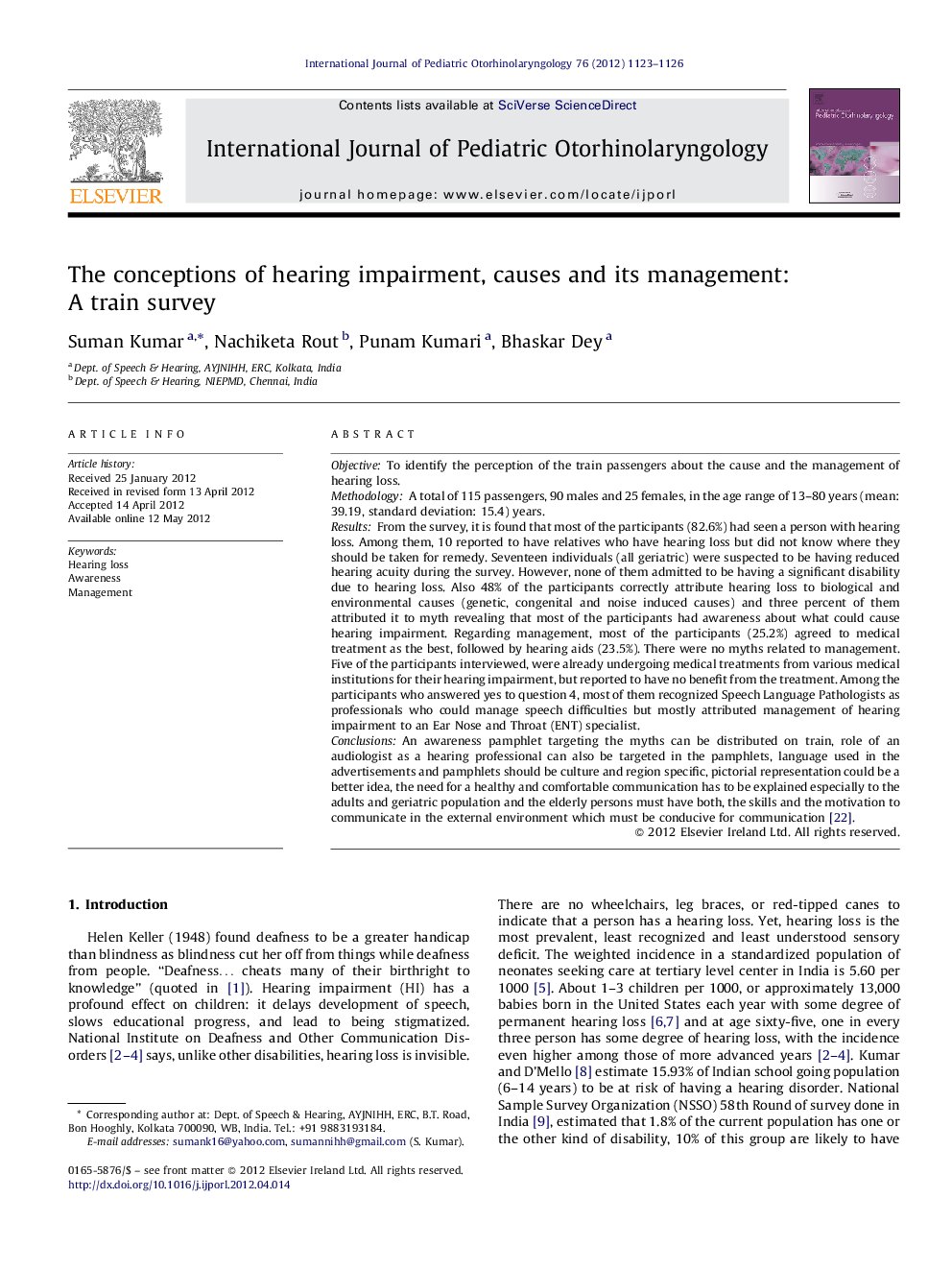| Article ID | Journal | Published Year | Pages | File Type |
|---|---|---|---|---|
| 4112684 | International Journal of Pediatric Otorhinolaryngology | 2012 | 4 Pages |
ObjectiveTo identify the perception of the train passengers about the cause and the management of hearing loss.MethodologyA total of 115 passengers, 90 males and 25 females, in the age range of 13–80 years (mean: 39.19, standard deviation: 15.4) years.ResultsFrom the survey, it is found that most of the participants (82.6%) had seen a person with hearing loss. Among them, 10 reported to have relatives who have hearing loss but did not know where they should be taken for remedy. Seventeen individuals (all geriatric) were suspected to be having reduced hearing acuity during the survey. However, none of them admitted to be having a significant disability due to hearing loss. Also 48% of the participants correctly attribute hearing loss to biological and environmental causes (genetic, congenital and noise induced causes) and three percent of them attributed it to myth revealing that most of the participants had awareness about what could cause hearing impairment. Regarding management, most of the participants (25.2%) agreed to medical treatment as the best, followed by hearing aids (23.5%). There were no myths related to management. Five of the participants interviewed, were already undergoing medical treatments from various medical institutions for their hearing impairment, but reported to have no benefit from the treatment. Among the participants who answered yes to question 4, most of them recognized Speech Language Pathologists as professionals who could manage speech difficulties but mostly attributed management of hearing impairment to an Ear Nose and Throat (ENT) specialist.ConclusionsAn awareness pamphlet targeting the myths can be distributed on train, role of an audiologist as a hearing professional can also be targeted in the pamphlets, language used in the advertisements and pamphlets should be culture and region specific, pictorial representation could be a better idea, the need for a healthy and comfortable communication has to be explained especially to the adults and geriatric population and the elderly persons must have both, the skills and the motivation to communicate in the external environment which must be conducive for communication [22].
